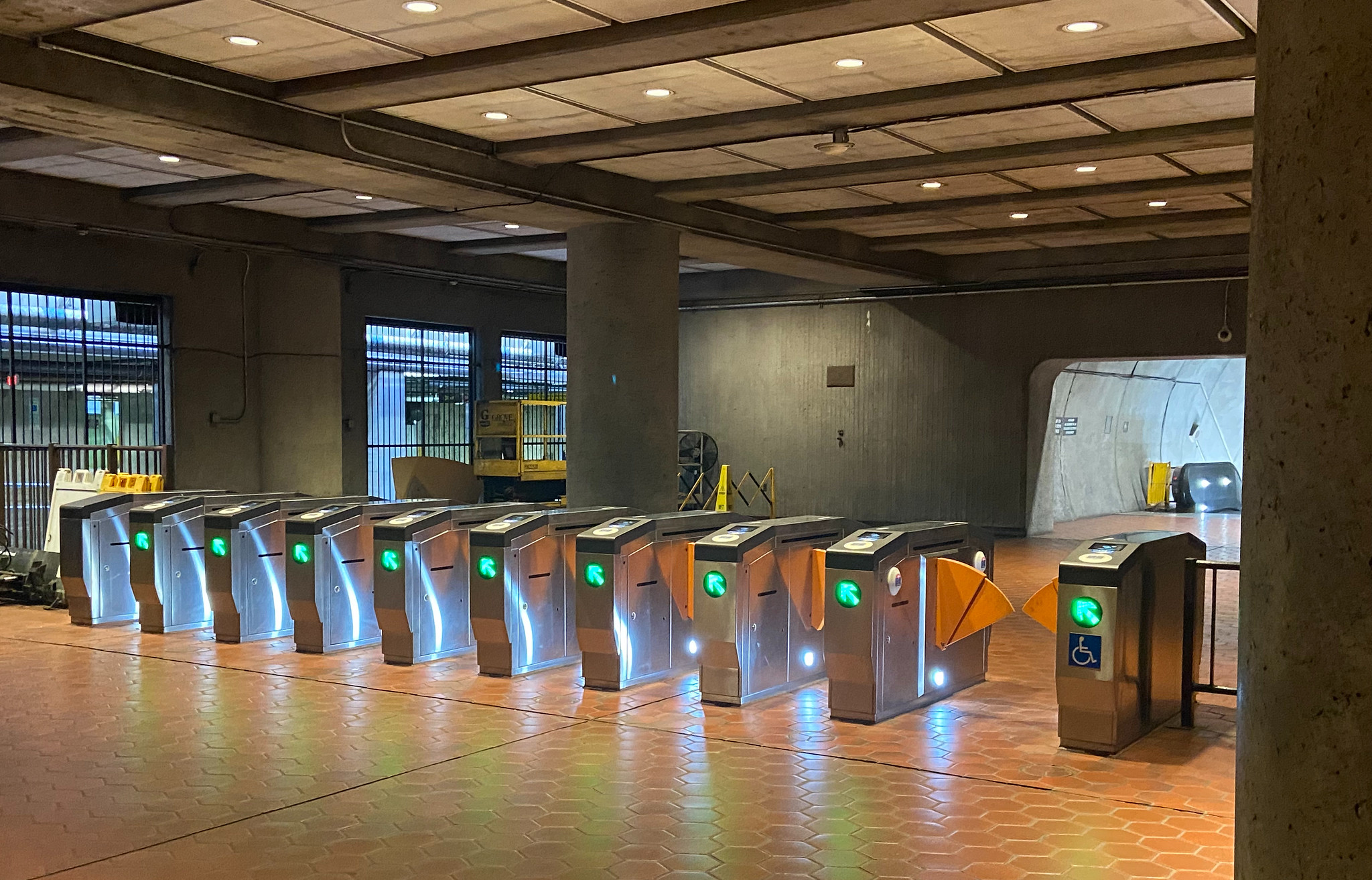Editor's note: Op-eds do not necessarily reflect the views of the Streetsblog staff, or of the author's employers.
Watch the news in any transit-rich American city today, and sooner or later, you’ll likely see a video of people jumping over fare gates at a transit station — and a newscaster talking about how it’s bankrupting the agency.
In my home region of Washington D.C. region, fare evasion is an expensive reality, losing the Washington Metropolitan Area Transit Authority (WMATA) roughly $40 million in revenue in 2022 alone. Those losses, though, are diverting attention from a more significant and fundamental problem: a potential $750 million budget shortfall that could lead to service delays of as much as half an hour.
To solve a shortfall of that size will take more than gates and enforcement alone. The fate of the Washington Metropolitan Area Transit Authority (WMATA) hinges on regional leadership — and rather than getting annoyed by fare evasion, our concern should be our leaders' actions.
To contextualize this even further, fare evasion's estimated revenue loss of $40 million barely makes a dent in WMATA's total $4.8 billion budget. And in some ways, the money that’s lost when people ride for free could represent a significant public benefit: according to a 2012 report by the National Building Museum, cutting car ownership in Washington D.C. by 15,000 vehicles would save the local economy $127 million.
While news outlets are preoccupied with fare evasion and WMATA's strategies to combat it, a more significant question emerges: How else can WMATA generate revenue?
One potential avenue lies in creative solutions for generating revenue through underutilized parking spaces. The WMATA parking fee is about five dollars per day, and if you leave after midnight, there's no charge. Back in 2015, WMATA parking lots were utilized at 75 percent capacity, but by 2019, that figure had dropped to 55 percent — and in most MD and VA stations, parking usage plummeted to as low as 20 percent. As people opt to live and work nearer to metro stations, the demand for parking declined and demand for housing near bus and train lines has skyrocketed with little inventory available to meet it. The pandemic further accelerated this trend, which was driven by remote work, especially among white-collar employees.
To its credit, the WMATA’s 10-year strategic plan does envision transforming many of these expanses of asphalt into mixed-used developments — but the response hasn't been swift enough. Since 1975, Metro has completed just 55 joint development projects — a pace of less than two projects a year.
Of course, it’s not the WMATA’s responsibility alone to solve the intertwined challenges of inadequate transit revenue and the shortage of transit-oriented homes. A significant obstacle in land development is the minimum parking requirement, a mandate that drives up housing costs and construction expenses. In the past decade, countless jurisdictions across the U.S. have abolished minimum parking mandates to stabilize rents and provide more housing choices. A similar shift has happened within the District, but it needs to expand region-wide.
To accelerate the implementation of transit-oriented development, WMATA and regional decision-makers must both adopt forward-thinking strategies. Streamlining contracting and construction processes and eliminating minimum parking requirements at the minimum can greatly expedite progress.
These types of policy changes become even more crucial as housing prices soar and heatwaves and storms escalate. While gate-jumping is a serious issue, it’s worth noting that getting more people to ride transit legally is essential to our climate targets — targets that we currently aren’t meeting. The Md., Va., and D.C. governments have collectively committed to GHG reduction targets of up to 100 percent between 2030 and 2045, but progress has been slow. Between 2016 to 2021, our region’s emissions only decreased by 6.7 percent. While some emissions were reduced in various sectors, transportation saw minimal improvement, with a reduction of less than three percent.
It's clear that continuing to rely on cars is unsustainable for our planet, and that deaths on our roads are rising alongside our carbon emissions, claiming 43,000 lives in car crashes last year alone. And that’s not even accounting for the unjustly distributed environmental damage that driving brings; even the best pavement and most high-end tires — including those on electric vehicles — contribute to air and noise pollution, releasing microplastics which end up in oceans and our bodies and leading to significant mental and physical health issues.
Is there a superior and safer way to travel? Absolutely. We deserve and should insist on dependable and frequent public transit, along with access to bikes and e-bikes, green walkways, and vibrant, human-centered communal spaces. This choice isn't just about enhancing mobility; it’s about fueling economic growth and fostering a glimmer of hope in our fight against climate change.
To be clear, I'm not advocating for gate jumping. But I am advocating that we direct our attention to what truly matters. While addressing fare evasion is important, the more pressing urgency lies in achieving our climate goals, promoting healthy lifestyles, fostering sustainable transportation, and building resilient infrastructure. Unfortunately, our fixation on fare evasion has distracted us from these critical priorities
Dr. Sogand Karbalaieali (PhD, PE) has extensive expertise as a transportation engineer, contributing her skills to research, engineering, and planning endeavors. Her portfolio showcases active involvement in a multitude of projects that highlight the importance of multimodal transportation, safety, transit, equity, and the enhancement of pedestrian and cyclist mobility. Her contributions span various regions, notably the Washington Metropolitan Area and locations across the United States. Dr. Karbalaieali and her husband call Rockville, MD, their home, sharing it with their trio of canine companions. Eager to embrace eco-conscious commuting, she embarks on journeys throughout the town astride her cargo e-bike. Her preferred mode of transportation is taking trains, particularly the Amtrak service connecting DC and NYC.






